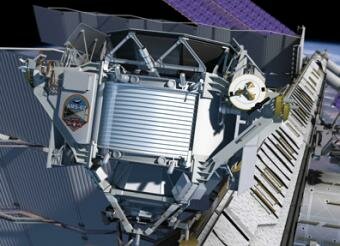A team of mathematical experts have said that 1729, which is also known as the Ramanujan-Hardy number, is linked to aspects of string theory and...

An experiment by Massachusetts Institute of Technology (MIT) researchers while working with Alpha Magnetic Spectrometer (AMS), a $2 billion cosmic ray detector attached to exterior of the International Space Station, ISS, has provided new data that could clarify the origin of dark matter.
Every galaxy is thought to be surrounded by a halo of dark matter that helps bind it together gravitationally. Dark matter cannot be seen directly with telescopes; it neither emits nor absorbs light or other electromagnetic radiation at any significant level.
The leader of the AMS team, Nobel laureate Samuel Ting of the Massachusetts Institute of Technology in Cambridge, mentions that these new results do not prove that dark matter has been detected. However, the data could help them in interpreting it in an appropriate manner.
For three years, an international team of researchers has been collecting data about cosmic-ray collisions. They have watched telltale patterns in shifting balance between electrons and positrons (a subatomic particle with the same mass as an electron and a numerically equal but positive charge), their antimatter equivalent, at higher and higher energies. Now that 41 billion cosmic-ray events have been analyzed, they are reporting a decline in the proportion of positrons at energy of 275GeV.
After measuring the spectra of electrons and positrons individually, it was found that the spectra have different shapes as energy increases.
The new data suggests the positrons aren't simply secondary cosmic rays. They are just the cosmic ray interactions. If that were the case, then the electrons and positrons would be coming from different places and there would be no reason to expect their spectra to be similar.
AMS is scheduled to take data for 10 more years, which should enable scientists to cut down the uncertainties and extend their reach toward higher energy.
Gregory Tarlé, an astrophysicist at the University of Michigan, Ann Arbor, said, "Higher energy cosmic rays arrive at such a low rate that even quadrupling the data set would leave large statistical uncertainties".









